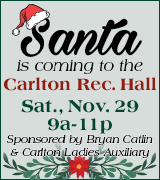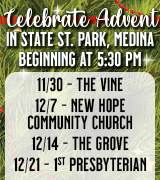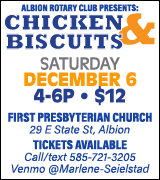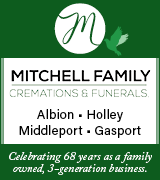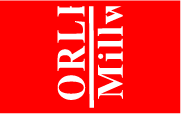Carl Fischer, Medina’s ‘Big Leaguer,’ lived his baseball dream at highest level
By Craig Lacy, member of Medina Historical Society
“Illuminating Orleans” – Volume 5, No. 27
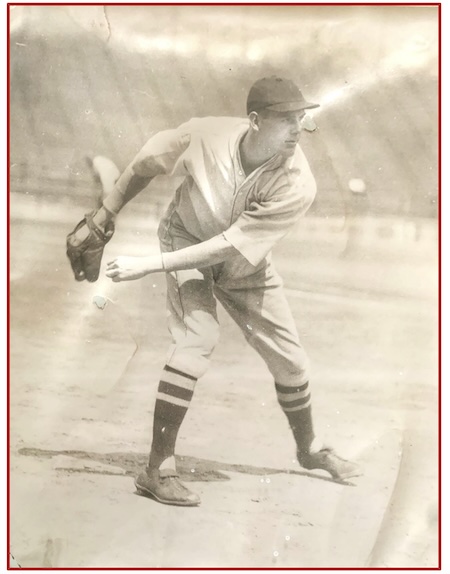
Carl Fischer starred as a left-handed pitcher in a professional career for two decades.
“Fischer Fans the Great Bambino.” So read the headlines of The Daily Journal on May 30th, 1931. The day before, 26-year-old Medina native Charlie “Carl” Fischer, relief pitching for the Washington Senators in the bottom of the ninth, bases loaded, retired three New York Yankees in order, including striking out Babe Ruth and forcing a pop up by Lou Gehrig to save the 3-2 win for the Senators. A 10-minute standing ovation followed by the Washington fans.
Back when baseball was still more of the national pastime and young boys followed their favorite teams and players while dreaming of making it in the Big League, one Medina boy succeeded.
Charlie began his baseball career playing for Medina High School and left school the spring of his senior year in 1925, forgoing his diploma for a chance to play major league baseball. He signed with the Rochester Red Wings and was sent to Scranton, Pa. to play in the New York-Penn League helping his team to win the pennant in 1926. It was there that his manager Jack Eagon gave Charlie his nickname of “Carl” for reason now lost to time but for whatever reason it stuck with him for the rest of his life. He would go on to play organized baseball for over 20 years.
Carl’s major league career spanned seven years from 1930-1937 where he racked up a record of 46 wins, 50 losses with 376 strikeouts in 822 innings while playing in 191 games for the Washington Senators, 1930-’32 and part of the 1937 season; St. Louis, 1932; Detroit Tigers, 1933-’35; Chicago White Sox, 1935-’36; and the Cleveland Indians, part of the 1937 season.
Getting to the big leagues is often a slow, grinding process of making your way through the farm clubs and for Carl it was no different. From Scranton, Carl spent the next three years with the Newark Bears, part of the Eastern Shore League entering spring training in Pensacola, Florida in 1927, as a 5’ 11’, 160 lb. strapping 21-year-old “Southpaw.”
He had speed, curves, hooks and wildness, plenty of wildness. In 1930, after spending time also in the PONY and International Leagues, he was called up to the Washington Senators, thus beginning his career in the majors.
It was in 1931, while with Washington, that Carl gained fame retiring both Ruth and Gehrig in the bottom of ninth with bases loaded to save the 3-2 win with Manager Walter Johnson telling the young pitcher as he took the mound, “Show ’em your real stuff, Charley.” The 1932 season saw Carl pitching for the St. Louis Americans and then on to Detroit in ’33. While with Detroit in ’34 he pitched in the game that won them the pennant for the first time in 25 years and earned his share of World Series money.
His next brush with fame came on July 20, 1935, while pitching for the Chicago White Sox. Carl held the Washington Senators hitless for 8 innings when the lead batter in the ninth belting a short hit over second base for a single. He then retired the next three batters in order.
He started the 1936 season with Kansas City but in June was sent down to play with the Buffalo Bisons. It was during his time in Buffalo that he was honored as the International League Pitcher of the Year
Like his major league career, Carl’s minor league time was spent with many farm teams across the country. In his first full year in the International League playing with Baltimore and Toronto, Carl led the league with 196 strikeouts, winning 18 games. 1939-‘41, found Carl pitching for the Toronto Maple Leafs.
He would go on to spend 5 years after the war with the Pacific Coast League pitching for Portland and Seattle while also spending time in Kansas City, St. Louis and Buffalo. While with Portland, Carl set a league record with four playoff victories.
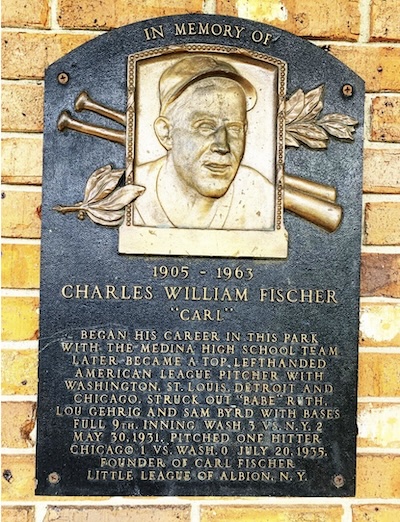
This plaque in honor of Carl Fischer at Medina’s Veterans Memorial Park.
At an Elk’s benefit held in Medina honoring Carl in 1936, WGR radio announcer Roger Baker, during his speech recounting the 1936 Bison’s season stated, “I have broadcast many exciting games during my six years of experience as a radio announcer, but never, even in World’s Series games have I seen so many thrills rolled into one season of pitching as those furnished by Carl Fischer.”
While pitching for the Bisons in 1937, Buffalo Times sportswriter Francis Dunn wrote that “(He) has a fast ball that mows down batters and wears out catchers.”
1937 would be Carl’s last year in the major leagues splitting the season for both Washington and Cleveland.
Carl married the former Grace Reynolds from Middleport in 1929 and they made their home at 137 State Street in Medina. Upon retiring from baseball, Carl operated Fischer’s Newsroom in Albion until his death in 1963. While in Albion, baseball was never too far from his mind with displays of memorabilia decorating his business and always a willingness to offer advice and guidance to young ball players while being the founder and president of the Central Orleans Little League for over a decade where he supplied the Carl Fischer trophy to the pennant winner each season.
In September 1964, a year after Carl’s death of a heart attack, a bronze plaque was erected behind home plate at Medina’s Veterans Memorial Park to honor the legacy of Charles “Carl” Fischer. On the plaque are memorialized Carl’s two big league achievements, his retiring of both Ruth and Gehrig and his one-hitter. Funds for the memorial were donated by baseball fans from Medina, Lyndonville and Albion. A fitting tribute to a local boy who made good.
Note from Orleans County Historian Catherine Cooper: We welcome Craig Lacy as a guest columnist this week. An active member of the Medina Historical Society, Craig was inspired to write this article by the display of Fischer items at the Museum. The Museum is open to the public on the first Saturday of the summer months or by appointment, contact https://historicmedina.org/contact-us/. This article is published courtesy of the Medina Historical Society.
















